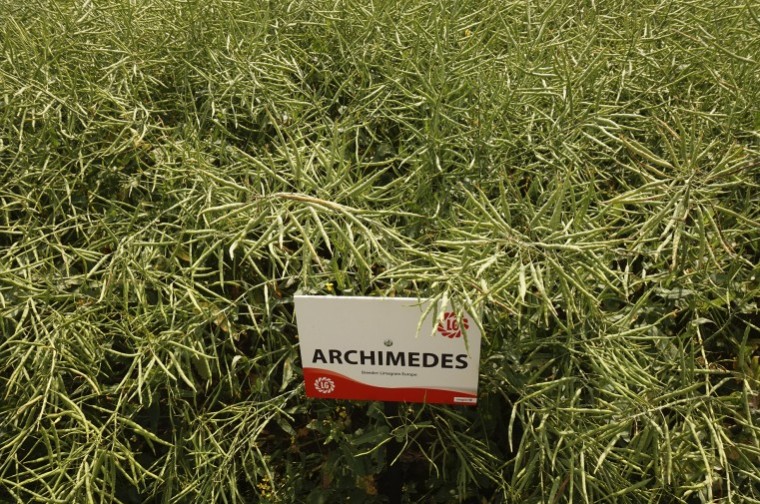Clubroot is typically most severe in wetter regions with a history of mixed cropping, such as Scotland and northern or western England, but isolated cases occur across the UK, with losses exceeding 50% of yield potential in the worst-affected crops.
“Clubroot is still a relatively niche problem compared to diseases like light leaf spot, but we’re seeing more cases around the country, and for growers in hotspot areas there’s a high proportion who have at least one field affected,” Limagrain’s Vasilis Gegas says.
“It mirrors what we’re seeing elsewhere in Europe where clubroot incidence is increasing, possibly as a consequence of climate change resulting in more frequent, milder and wetter winters. It is why the disease is our most heavily-invested oilseed rape breeding trait, aside from turnip yellows virus.”
Resistant hybrid varieties such as; Archimedes, offer a valuable option for growing oilseed rape on infected land, and newcomers such as; Alasco, promise to virtually eliminate the “yield drag” associated with resistant varieties in the past, says Dr Gegas.
“Alasco is the next generation of clubroot resistant varieties, with a yield close to mainstream varieties and oil content 3% higher than Archimedes.”
Alasco retains and enhances many of the traits in Archimedes that were developed specifically for northern areas, such as robust light leaf spot resistance, short stiff straw, pod shatter resistance and early maturity.
Agrii northern seed sales manager; Rodger Shirreff, who plans to try Alasco for the first time this autumn says, Archimedes has served growers well over recent years, allowing good yields to be produced from clubroot-infected land.
The variety’s vigorous autumn establishment is particularly beneficial as it allows the taproot to establish quickly, providing a solid foundation to build on. It is also one of the quicker varieties to resume growth in the spring, he notes.
“Clubroot is a widespread issue in Scotland, that’s been perpetuated by tight (one year in four) rotations. But it’s not limited to Scotland; we’re also seeing increasing problems further south, so more growers are moving to resistant varieties.”
Protect future resistance
While genetic resistance is very effective, Dr Gegas warns the clubroot pathogen (Plasmodiophora brassicae) is capable of evolving and overcoming resistance in certain circumstances, so genetics must be supported with good husbandry and stewardship.
He advises against growing resistant varieties unless clubroot is a significant problem and says extended rotations of at least one year in seven or eight, and careful soil management must also be used to control disease.
“There’s a lot to gain from making soil conditions unfavourable for clubroot by liming to increase the pH to 6/7, prior to drilling or improving drainage of waterlogged areas. Wider rotations alone aren’t the answer because the pathogen can survive for such a long time in soil.”
Commercial soil tests can be useful for confirming presence of the clubroot pathogen, but should only be a guide, he notes. “We often find many soils contain the pathogen, but that doesn’t mean disease will develop or there will be an impact on yield, as it still requires the right environmental conditions.”
“Last autumn was mild and wet so we saw a lot of symptoms, and if climate change leads to frequent, milder and wetter winters, we could well see a wider spread of the disease.”
Mr Shirreff says clubroot can sometimes go unnoticed until significant yield declines are seen, so vigilance is essential if growers suspect there may be an issue.
Clubroot incidence tends to be patchy and leads to affected plants wilting in hot, dry weather, becoming stunted or dying completely as the galls that form on the tap root restrict water and nutrient uptake.
He also points out that volunteers from previous oilseed rape crops can harbour the disease and need to be controlled.
“We’ve seen situations in the past where a resistant variety has been grown and it’s appeared to have broken down to the pathogen, but in fact it’s instead the non-resistant volunteers that have grown up within the crop and then succumbed to the disease. Examples like this really highlight the strength of growing resistant varieties.”




